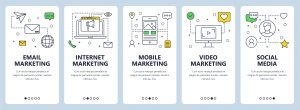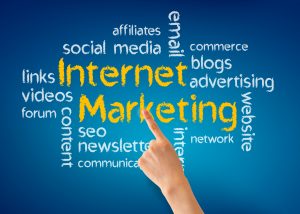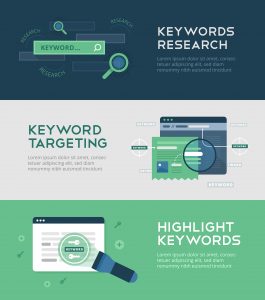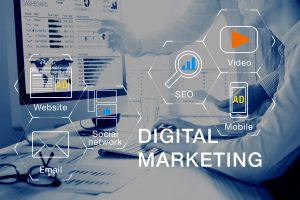Digital Marketing: Changing with Times
The curiosity levels of humans have changed over the years and, as such, have their means of eyeing products, goods and services. Companies have evolved their methods of communication with fellow customers, displaying advertisements for catching attention and other practices that lead to maximum sales.
Over the past three decades, the marketing domain has undergone tremendous developments due to changes in technology, customer behaviours, evolving role of social media and other channels, and a constant growth rate that has led to an epic transformation in this sector.
The past years give an idea about how life, in general, has picked up the pace and the services that have been provided to consumers at their doorstep. Starting off from hand-written letters and notes that took months and sometimes years to reach across the sender have been well and indeed replaced by emails and now social media texting.
Also Read: Professional Certificate Program In Marketing And Sales Management
As nearly as ten years ago, there were some eye-catching advertisements found in magazines with glossy pages, which companies used to pay extra just for creating a “hype” within consumers that paved for three-dimensional animated hoardings that can be found near popular tourist sites and attractions.
The marketing managers and personnel have started working towards reformed pathways that can help in bringing them closer with their customers and lead to better dividends in financial and growth terms.
Through the several marketing courses rendered by leading institutions, businesses aim to tailor their strategies that lead to more sales.
The Internet: Leaving a Lasting Impression on Marketing
The Internet was the hero marketing never needed but rather deserved since it was the single best event that left a lasting impression on this domain. The periods before and after the introduction of the Internet in marketing can be described as pre-Internet and post-Internet periods.
The changing face of marketing and communication in the digital era has completely revamped how these domains are leading innovations and bringing about new and advanced practises for serving their consumers in a better manner.
Knowing and growing in a marketing capacity can lead to better and rewarding careers for upcoming professionals who aim to achieve big in these job roles. Therefore it’s vital to understand the core competencies that govern marketing procedures and canvass a career along those lines.
Also Read: Executive Certificate Program in Digital Marketing from IIM Raipur
With ever growing and emerging trends in market research, studies, statistics and other areas taking up courses that teach about different facets of this sector, budding managers need to take up knowledge accordingly.
Today, there are many online marketing courses offered by reputable and highly-established institutions across the country that have the sole objective of developing capable marketing managers. These online marketing courses with certificates are tailormade in close inspection of excerpts and a team of individuals.
These programs come pre-equipped with a coherent framework for furthering the learner’s knowledge about these domains. Upon learning from these credible programs, professionals will get a better grip over different technologies and methods that have helped in strengthening marketing strategies over the ages.
The best online digital marketing courses rendered by some of the top rated colleges spread across the country highlight the surge of modern E-commerce, interconnectivity websites and other tools that came up due to the introduction of World Wide Web systems.
As users for World Wide Web increased, there was a shift in online platforms, their landscapes, the rise of better and more improved outbound tools and technologies that can help target a more comprehensive set of audiences and convert more leads.
The sporadic rise of the Internet led to a complete three-sixty degrees change in how businesses interacted, engaged and delivered their products to end-users. What we have today in the world of digital marketing all boils down to the birth of domain names provided on the World Wide Web that has created better visibility for brands across networks.
Also Read: Introduction To Sales & Marketing Management
Internet-Based Marketing: Laying out its Benefits
The world of marketing has found its home on the Internet, and today they both help each other just like a TLS handshake! The utilisation of accurate Internet services can help businesses in targeting consumers that will purchase the marketed goods, services and products.
Today, everything that a marketing agency needs is supplied through the Internet. Whether it is dissecting the social media jargon, incorporating the right keywords for SEO techniques, and developing well-performing strategies, having Internet backed mechanisms certainly assists corporations.
The Internet acts as a means for conducting regular, affordable and customised communication with users across the globe and heeds to their concerns, demands and needs. It comes in handy while building relationships with prospective clients and providing information about services.
Several online marketing courses stress on the need for incorporating Internet services for getting the most out of marketing and sales procedures.
Also Read: Objectives of Learning Sales & Marketing Management
There are numerous benefits associated with Internet-backed marketing; they include the following:-
-
Easy to Use and Convenient
The Internet has become a torchbearer for increased accessibility, navigation and can be used 24/7 by marketing companies. Moreover, since users can now purchase goods from anywhere across the world, they need not worry about spending a fortune on transportation costs.
Also Read: 10 Best Digital Marketing Courses to Advance Your Career
In the import and export businesses, this has a significant advantage since it allows their buyers to place and receive orders from the comfort of their homes. Furthermore, Internet based marketing has nuanced systems in place for tracking sales items, their delivery dates, upcoming and past orders etc.
Internet marketing provides a revolutionary shopping experience for customers to buy and purchase goods from anywhere around the globe, and with the convenience, it can lead to better shopping decisions.
-
Lower Cost of Operations
Managing a marketing business comes with its own costs, arrears and other charges that are subject to changes with respect to rules, laws and regulations. In an offline setting, a marketing business requires money and resources for staff salaries, electricity costs, a lump sum amount to drive campaigns and others.
Online businesses save money on paperwork and other operations since they work on digital platforms. The XLRI digital marketing course aims to teach all the rudimentary aspects that undergo an online e-commerce setup.
Also Read: Sales Management vs Marketing Management
Operational costs for online businesses can also be reduced by automating steps such as lead conversions, handling out mailers, and discounts to regular clients. The Internet itself can perform by leveraging specific tools and techniques.
-
Measurement of Results and Tracking Progress
The metrics offered by the Internet helps marketing managers to survey their environments for tracking and displaying results in real-time. With the advent of online marketing professionals can oversee how their promotional, advertising, and campaigning techniques look and whether they are able to meet objectives set up by corporations.
These tools and software have a dual advantage of measuring and tracking results, and illustrating the progress of marketing campaigns and activities in detailed graphical and other readable form.
The regular measurement and tracking of results is a vital attribute for understanding how well a business is performing and the necessary amendments required for the same. With a better insight offered by tracking and measurement of results, one can modify marketing procedures to achieve results in a better manner.
-
Offers Flexible Tools for Demographic Targeting
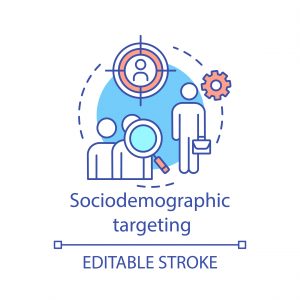
Marketing agencies gather information for their consumers based on several parameters such as their purchasing patterns, location, time spent on websites and others.
Understanding the demographics of consumers also helps marketing managers to show products as per their geographic locations. This leads to targeting audiences between specific regions, and Internet based marketing allows companies to achieve the same.
-
Opportunity for Global Marketing

Internet driven marketing is also vital in offering a golden opportunity for businesses to pursue globally-run marketing procedures.
By taking the help of SEO keyword searches, utilising tools and techniques for handing out newsletters, blog posts and other social media posts to consumers, marketing professionals can create a global audience for their marketed goods, services and products.
Also Read: How Good is the Sales & Marketing Management Certification Program?
Marketing firms can now easily reach their customers that are beyond their geographies 24/7 and offer goods that match their preferences, interests and passions.
With changing times, marketing agencies can tap into the resource of global marketing procedures for worldwide promotion and advertising.
The best online marketing courses available today offer a holistic view over the new and advanced mechanisms for performing different business operations.
-
Automated and Tech-Savvy Marketing
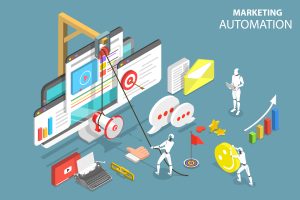
The most significant advantage of Internet based marketing is that it leads to highly automated processing through easy to use and navigable software.
The access to this software and tools can lead to faster delegation and completion of tasks, bring out better ideas for designing campaigns and strategies and perform redundant jobs so that marketing officials can focus on working towards other essential areas.
Also Read: A Step-by-Step Guide to Digital Marketing
The rise of Internet marketing and sales processes benefits organisational structure by giving it a fully automated operational platform that can deal with changes and amendments in a flexible manner.
The primary significance of automated systems leads to time consuming for businesses which they can utilise towards formulating strategic plans, processes and other vital facets that undergo marketing.
-
Reformed Data Collection Techniques for Personalised Goods

Marketing is a corporational branch that thrives on personalisation and the manner in which products, goods and services stand out from other competitors to attract prospective buyers.
The reformed data collection techniques used by Internet based marketing is a critical player in analysing customers from varied backgrounds, their likes, dislikes and other segmentation aspects.
Each time a customer goes through a specific website, their data is collected in the form of cookies, cache and other means. This data is essential for companies to serve their users in a better and customised manner.
The active collection of data leads to improved segmentation of audiences in the form of sending them advertisements, promotional discounts, offers, vouchers and coupons so that they form a long and loyal relationship with a particular brand.
The data sets collected by companies usually include the end-user’s name, age, gender, location, how they came to your site, what sites they visited after they left, viewed products, and the pages visited on your site.
-
Ability to Easily Tweak Marketing and Advertising Campaigns
Today, modern companies deploy a mixture of agile and waterfall processes to take care of their marketing processes and keep a room for last-minute design changes.
Internet powered marketing agencies also utilise these robust and easy to tweak campaigning and advertising particulars so as to incorporate and tell about any changes that need to be done.
When a given campaign or advertising paradigm needs to be modified, the online-based marketing courses help corporations do so without worrying about downtime, service interruption, and halting the working systems since their staff are already equipped with negotiating these challenges.
Also Read: Marketing Analytics: Why it Matters to your Business?
This leads to quick additions and changes to the appearance of online shopping malls, the website, and other backend operations.
-
Long-Lasting Sales Relationships

Customers need to be updated regularly regarding new services, goods and products coming through markets, their latest developments and posts. A thriving and long-lasting sales relationship requires a constant connection with end-users, understanding their needs and concerns, publishing content that appeals to end-users.
Contrary to traditional based marketing, wherein customers can misplace or lose the company card or pamphlets, Internet based campaigns offer several options to customers. They can access websites and get helpful information regarding emails, socials and other channels that can help the relationship go to another level while catering to the needs and wants of customers.
The marketing agencies can use vital information such as newsletters, blog posts and even emails to offer discounts, sales vouchers, event giveaways and other promotions so as to allow customers to come back to that marketing company.
The Internet-Based Marketing is Jack of all Trades
With growing evolutions and developments, marketing businesses need to have well-defined pathways that achieve separate objectives rather than having a narrow list of goals.
This is an effective and practical method for ensuring that businesses stay relevant and tick out the boxes that help achieve varied objectives. Therefore, it’s essential to be “jack of all trades rather than being master of none” in the field of Internet fuelled marketing procedures.
Also Read: Digital Marketing and Efficient Search Marketing Tools
Companies have adopted the new, advanced and improved method of fulfilling their customers’ needs, demands, and interests by developing efficient practices that allow end-users to choose and select products.
The rise of e-commerce websites and with it the growing competencies to augur marketing strategies that help in better leads, return of investments, higher revenues, and good profits has been met with open hands.
The path of Internet based marketing proves to be the viable, feasible and practical method to assist businesses to get better prospects with their products and skyrocket their profits.
Today there are several advantages associated with Internet based marketing such as convenience, 24/7 accessibility of using online tools and software, significantly lower cost of operations to go with real time progress checking and measurement of results using different metrics.
Furthermore, it gives the option to target customers visiting a given website using demographically based tracking and providing goods, services and products wherever they can be found on those locations.
The rise of global marketing comes to the fore in highlighting critical areas of market research that can be looked at for forming successful action plans and strategies.
Internet-based marketing comes in an automated mode that helps look after different processes that have a similar chain of actions and can be performed quickly by automating them using special tools and software.
Data collection is another facet of Internet marketing that has a major role to play in capturing information from various sources and holding them together for future references.
With flexibility in changing marketing plans, marketers can rest assured that changes can be made even during later stages of campaigning and promotional passages.
Also Read: Best Integrated Marketing Strategy Course by IIM Lucknow
The new age of marketing offers complete coverage over different aspects of this sector and allows better interaction and communication between agencies and customers.
It’s therefore vital to understand how far marketing has evolved from its pre-Internet time to the ones described above.
Marketing in Pre-Internet Age: Going the Ancient Way
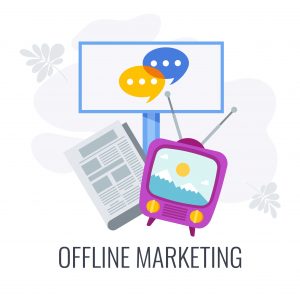
There was a time when the Internet was just a figment of the imagination, and the world still revolved around billboards, hoardings, catchy wallpapers, attractive visuals and others. The onset of a TV, radio and newspapers was a significant boost to the marketing junctures since advertisements can reach a wider audience and networks.
Marketing in the pre-Internet age was based around the consumption of daily means of communication and reaching customers directly via sales pitch, conducting promotional events, coupon books, word of mouth and others.
Traditional-based marketing practices, also referred to as offline marketing procedures, relied heavily on print media. As such, they had to focus on creating a positive image across these channels.
The print advertising media platforms had a significant role to play in delivering messages to commoners and potential buyers. Therefore, there was a mutual understanding and regular connections between advertising companies and print media jargon for the transmission of marketing promotions.
Using traditional marketing allowed marketers to deliver goods, services, and products to their end-users on a person-to-person level, leading to better conversions. The ethos of direct selling requires an experienced salesperson, an effective marketing strategy, a deep understanding of the selected marketing channel, and surveying customers’ preferences.
Also Read: Get on the Digital Wave with an Advance Digital Marketing Course
Today traditional marketing is utilised to attract a specific segment of audience groups- old, retired persons and top-level executive members accustomed to print media channels.
The post-Internet practices might seem to be dwindling, but they have been on the rise given the growth of public relations and advertising industries in third-world countries. The potential associated with traditional marketing is immense since it can be used to target and promote brands that digital successors can’t reach for various reasons.
Before the inception of the Internet, marketing procedures consisted of various forms of advertising and promotional strategies. It was dubbed as the most “recognisable type of marketing.”
Traditional marketing practices convey the message of “building something that 100 people love, not something 1 million people kind of like.” These wise words by Brian Chesky, the co-founder of Airbnb, shows the importance of developing marketing pathways that lead to results and subconsciously cater to the needs of targeted customers.
Print marketing such as magazines, newspapers, editorials and others from the core of pre-Internet marketing particulars. These different modes of marketing platforms are collectively referred to as print media.
Loosely described as advertisement practices in paper form, the strategy found its root in Egyptian times. Papyrus was a fundamental mode of message sharing and later for adverts across prehistoric civilisations.
Another facet of traditional based marketing and promotional techniques is the broadcast type that explicitly deals with myriad options for reaching customers via mass communication.
Also Read: Top 4 digital campaigns that will make you believe in Digital Marketing
Broadcast marketing includes television and radio that help in amplifying messages across listeners and mass media consumers. Radio broadcasters have been around since the early 1900s, with the first-ever radio broadcast dating back to 1920.
Television was always in the ranks to take over from where radio left and came up with its commercial break in 1941 and revolutionised the dynamics of advertising and campaigning.
There are a plethora of advantages that offline marketing provides and continues to provide to its users. It’s a powerful marketing tactic that marketing agencies still utilise.
Post-Internet Based Marketing: Carving its Own Niche
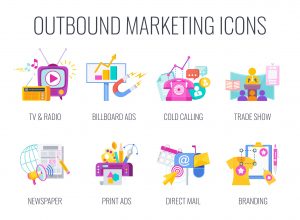
As described above, traditional-based marketing consists of a form of promotional technicalities and tools that reach the target audience using offline and other broadcasting practices.
The XLRI marketing course acts as an informative program that highlights the various milestones achieved by online businesses in delivering their services.
Even today, companies use several different types of traditional marketing strategies for engaging with their local audience and broadening their reach. There are fine lines between public relations and marketing that can be cleared by following traditional marketing procedures with separate promotion channels.
The post-Internet based marketing paradigms were highly successful and owing to the same reasons marketing and PR agencies still look up to them for reaping its benefits:-
-
Gives the Opportunity to Connect with Local Audience
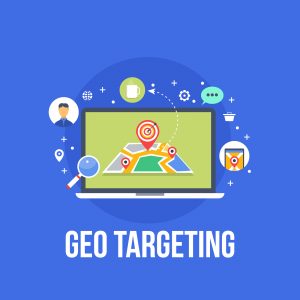
Traditional marketing plays a dominant role in reaching local audiences and connecting them together for product promotions. Since offline marketing connects with audience groups on a person-to-person level, it leads to better engagement, interaction and relationships with users.
In today’s world, customer relationships play a massive role in purchasing a product and sticking with a brand company for a long time. Customer loyalty is a significant aspect of marketing that pays long-term dividends.
Traditional practices leveraged by companies such as marketing collateral ( pamphlets, brochures), newspaper ads, local TV commercials and billboards bring a community together and help in building a solid customer base.
Modern customers are well-informed about the brands they follow, and traditional practices of marketing ensure that they are looked after, and their preferences are taken into consideration.
The offline mode of marketing proves to be organic, authentic and less of the showy corporate type that leads to a better interpersonal connection between audience groups and marketing managers.
-
The Utilisation of Sustainable Promotional Materials
There aren’t any downsides to digital marketing, but one peculiar feature of online-based advertising is that marketers need to provide an ongoing stream of promotional material to grab the audience’s attention.
This can be a mundane task for big and large-scale companies, and their budgets can support such long-term promotional materials. However, for small-scale firms and startups that are bursting onto the scene, it can be challenging to maintain funding for such expenses.
Also Read: Types of Digital Marketing Channels and Their Uses
Therefore, traditional marketing methods prove to be more sustainable and effectively bind the audience’s attention towards a specific brand, good and service marketed by firms.
The rate of mileage incurred from broadcasting and print media like TV, radio, newspapers, newsletters, and other magazines can generate noticeable viewership amongst target audiences.
Moreover, with the long-term benefits of offline marketing, managers don’t have to worry about posting every 2-3 days since print media covers the attention and viewership aspect of promotional activities.
-
Traditional Marketing Establishes Credibility
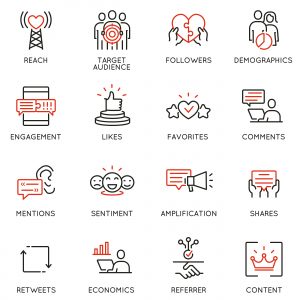
Leaving out the financial, sustainability and attention aspect of offline marketing, from a psychological point of view, traditional services for promotion lead to better credibility.
Before the oncoming of digital marketing tools and techniques, broadcasting utilities carried the perception of being reliable. The presence of bigger budgets and a network of well-established mediums in traditional marketing helps create a well-established name that carries credibility.
Placing an advertisement in a popular magazine or on the pages of a newspaper needs to have the finances for doing so and must target the right set of individuals. The promotion in such media gives the message that the marketing agency is growing, prosperous and financially stable.
-
Ability to Reach a Diversified Audience

Perhaps the greatest advantage associated with traditional marketing is that they can capture data about a diversified set of audiences and deliver marketable goods, services and products that can lead to more sales.
Contrary to digital marketing, wherein managers focus on creating campaigns based on customer segmentation for demographics, traditional practices rely on attracting a diversified set of individuals for conducting business.
This technique can come in handy for small scale businesses and independent firms who are looking for strategies to widen their audience groups. The ability to reach a diversified and broader audience group through a credible means of marketing platform helps attract customers and leads to better conversions.
Therefore, small businesses can utilise the technique of getting attention from potential customers through diversified audience targeting.
-
Creating Hard Copies for Materials can be Easier to Process

There’s no comparison of visually appealing, aesthetic images, animations and graphics made by digital firms. However, sometimes these visuals interlaced with intricate designs and patterns can be too much for customers and lead to overloading their senses.
It might actually put the potential client away from interacting and purchasing goods, services and items offered by companies. In order to counter this scenario from taking place, creating hard copies for these visuals can be easier to process and help in increasing performance.
Also Read: Get The Edge With An Online Digital Marketing Course
Viewers often feel disconnected with brand images and visuals that keep on changing, and hence they get distracted from understanding the message a specific brand aims to provide.
Direct mail- a powerful feature of traditional based marketing practices makes for easier processing and performs better when it comes to brand recall. Moreover, a brochure, for example, can be easier to skim through than a white paper or a website.
Moving on, a 30-second advertisement on television can be more digestible than a three minute long video on Youtube.
It all comes down to setting up cost-effective practices that require less effort for consumers, and hence in that respect, traditional marketing just ekes past online counterparts.
Traditional Based Marketing: Providing a Means for Survival

The traditional model of marketing has its own set of advantages and provides robust solutions. Be it creating a broader target audience, meeting potential customers, generating decent revenues and ROIS and others, offline marketing procedures help in offering numerous strategies for the same.
The utilisation of sustainable marketing materials such as print media makes it easier for audiences to interact with services, goods and products they offer. Moreover, it serves as a medium for creating better engagement, interaction and relationships between managers and the targeted customers since the traditional mode of marketing has a mark of credibility and reliability attached to them.
Also Read: Benefits of Digital Marketing Courses for Working Professionals
Even in the bolstering digital age, there are several advantages, as seen above, provided by offline based marketing procedures. These mechanisms help in solving issues and problems faced by businesses.
Offline marketing strategies work well in catering to individuals’ needs, wants, and concerns on a person-to-person level and addressing any lapses that companies might face. Since mass media and print-based systems can reach a wider set of audience groups, it makes it easier to segment audience groups and helps bring communities together.
The mode of direct selling works well in fast-paced environments such as the current ones, wherein sales employees can conduct live demonstrations for their products and goods, creating and generating enough leads on a daily basis.
The more exemplary elements and aspects of mass communication can be learnt by enrolling on online marketing courses with certificates that help in developing knowledge of concepts and principles that govern these domains. The specialisation in brand and marketing communication from MICA is one such program that aims at finessing learner’s capabilities for these sectors.
The world of marketing revolves around perception and impressions; although, with the visual aspect, the digital services might be better, but they sometimes can be too overwhelming. Hence, they might force onlookers and potential leads to ignore them and go for more basic and structured ones.
These structured, straightforward and workable marketing media are utilised in developing pamphlets, leaflets and other brochures that contain information along with images for excellent readability, a better understanding of services, and helps in creating a bond with targeted customers.
There are specific parameters that rule marketing and must be understood prior to taking a stand with either digital or offline based marketing channels.
Understanding 4 P’s of Marketing

Every marketed product delivered either with digitised pathways or through the old tried and tested methods need to be deployed using certain principles.
The well-structured XLRI digital marketing programs shed light over various attributes of this domain that lead to successful practices for selling their goods to users.
By honing skill sets and getting an insight over the basics of this sector through a plethora of online certificate courses, learners can understand its principles.
These governing factors revolve around target markets and their audiences in getting maximum attention and in returning profits and revenues for firms. It also zeroes in on the descriptive attributes that make digital marketing different from its traditional counterpart.
Here’s a list of 4 Ps of marketing that leads businesses and their prospects through any sales funnel and helps in achieving favourable results:-
-
Product
![]()
The product, good or service is the end result of all activities that take place inside any marketing proceedings. It is the culmination of final outcomes set up by companies and needs to be in accordance with a firm’s mission and vision statements.
Any successful and effective marketing strategy begins by having a sound understanding of one’s products and then deciding on giving it a final shape.
Also Read: Is Digital Marketing The New Big Thing?
The product could be an intangible service or type of good that fulfils the demand of a corporation’s target market and its audience.
It has certain sub-features such as functionality, brand image and perception, packaging and how it fits into customer’s lives.
The product must be functional in the sense that it should suffice the end-users purpose and should be able to solve issues and problems.
Next up, the brand image and perception is a vital part of any marketed service or goods since it needs to be visible across channels.
Along with these parameters, the end product’s packaging needs to be done in a practical manner and with changing times should be aesthetic so as to garner attention and it can be bought.
-
Price

The price of goods and products needs to be known, and it depends on how well a company knows their target audience.
If the product is made for a specific target section, then it needs to have a price that those customers are willing to pay and not vice-versa.
There need to be endless meetings between employees concerned with the pricing of products and those surveying the target audience to keep them on the same page and meet the sales objectives.
-
Place

The placement of goods and services is also a deciding factor that can have a say on the fate of products, goods and services offered by companies.
In terms of place, traditional marketing focuses heavily on getting goods in front of customers in the right place at the correct times.
Each good manufactured by a company has its arbitrary position in the marketing space. Individuals that undertake credible marketing courses through XLRI will understand how products need to be placed in universal settings.
The placement of products plays a crucial role in the marketing world as when a branded product is placed in an ideal setting, the chances of converting potential leads into clients increases manifold.
-
Promotion
The promotion of a product says a lot about what values it delivers to clients, the visibility and exposure it requires for gathering attention and viewership from onlookers, online users and others.
The promotional factor decides whether a product can do well with online or offline based marketing procedures.
The promotional activities could be web based- SEO, keyword searches, blog posts, paid advertising or others, or they can be offline, such as billboards, newspapers and others.
These top rated marketing management courses clarify further aspects of this sector via their program modules.
Which is Better: Pre-Internet or Post Internet Marketing?
The world has changed tremendously with advancements, evolutions, nuanced engineering mechanisms and other aspects. Somehow, these innovations have been felt closely in marketing departments since it works entirely on making a better world for customers.
As seen from the article above, the marketing domain has gone under tremendous evolutions; it can be defined into separate eras. The marketing sector has been heavily influenced by the inception of the Internet, and it has brought about major changes.
The influx of several marketing courses fabricated by leading colleges across the country have been instrumental in teaching about what undergoes different processes.
Amongst these, the XLRI marketing programs are deployed to teach upcoming professionals about its dynamics in the modern Internet and social media driven world.
Both pre-internet and post-internet applications, mass media, tools and softwares have aimed at auguring products that sit well with customers. Both the eras have their own advantages that are making digital marketing successful.
Therefore, it is hard to determine the better of the two- pre-Internet and post-Internet stages since these have caused a transformation in promotional and advertising departments.
More Information:
Certificate course in Strategic Management
The Beginner’s Guide to Brand Management
What is the Concept of Strategic Management?
Executive Development Program In Talent Management
Why is it Important to Study Human Resource Management?
Professional Certificate Program In Supply Chain Strategy And Management

